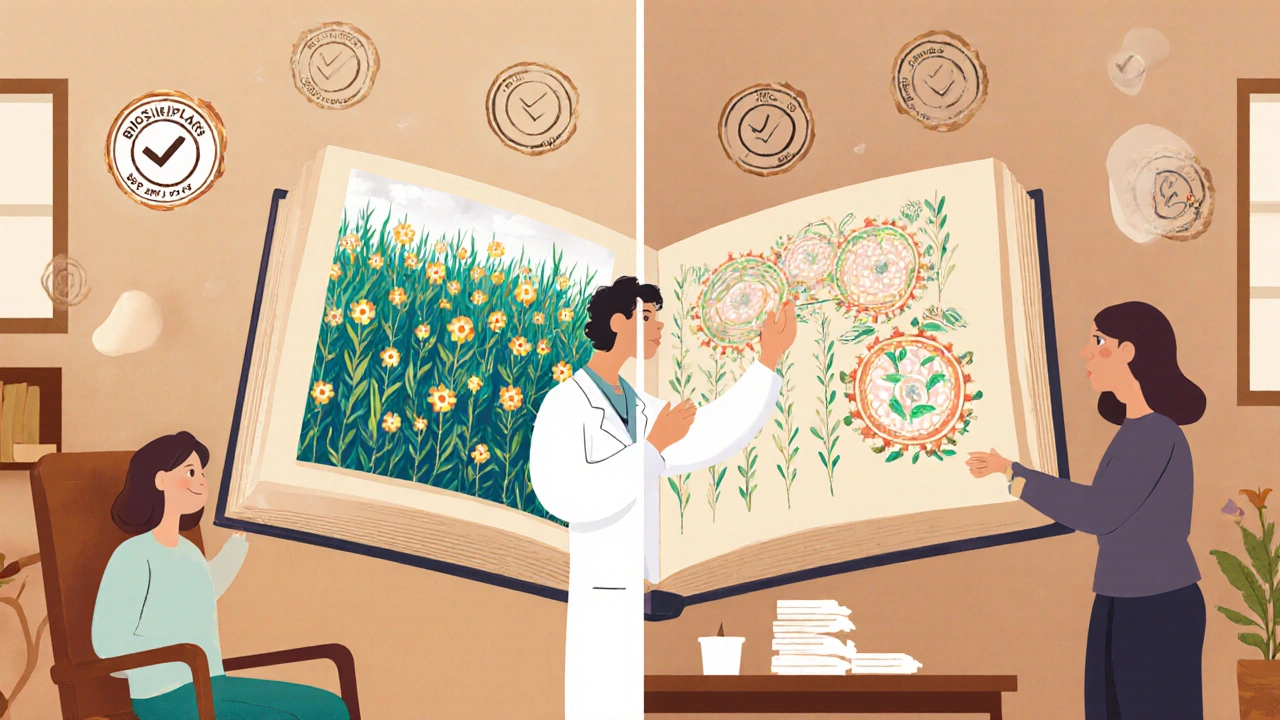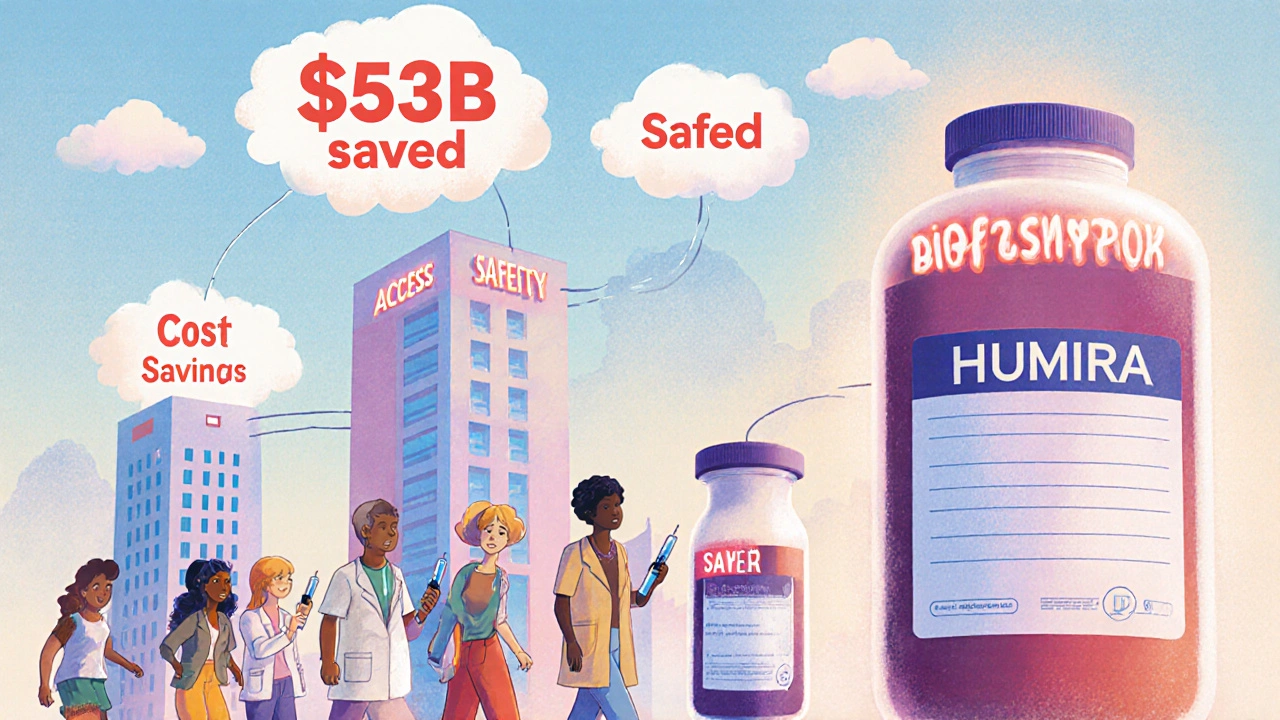When you need a cheaper version of a brand-name pill, you probably reach for a generic. It’s the same drug, same active ingredient, same effect-just lower cost. But what if your medicine isn’t a pill? What if it’s an injection for rheumatoid arthritis, cancer, or Crohn’s disease? That’s where biosimilars come in. They’re the closest thing to generics for complex biologic drugs, and they’re changing how patients access life-saving treatments.
Why Biosimilars Aren’t Just ‘Generic Biologics’
You can’t make an exact copy of a biologic drug the way you can with a small molecule pill. That’s because biologics aren’t made in a lab with chemicals-they’re grown in living cells. Think of it like baking bread from scratch versus buying a pre-made loaf. Even if you follow the same recipe, no two loaves are exactly alike. The yeast, temperature, flour batch-all these tiny differences change the outcome. That’s why biosimilars aren’t called generics. They’re highly similar to the original biologic, but not identical. The FDA requires manufacturers to prove biosimilars match the reference product in structure, function, safety, and effectiveness. That means they work the same way in the body, have the same dosage form, and produce the same clinical results. No clinically meaningful differences. Period. The approval process is rigorous. It’s not just one study. It’s dozens-analyzing molecular structure, how the drug behaves in the body, immune responses, and real-world patient outcomes. The FDA calls this the “totality of the evidence.” And it works. Studies show biosimilars perform just like their brand-name counterparts in treating conditions like rheumatoid arthritis, psoriasis, and certain cancers.Interchangeable Biosimilars: The Real Equivalent to Generics
Not all biosimilars are created equal. There’s a special subset called interchangeable biosimilars. These are the ones that can be swapped for the brand-name drug at the pharmacy without the doctor’s approval-just like a generic pill. To earn that label, a biosimilar must prove it can be switched back and forth with the reference product multiple times without increasing risk or reducing effectiveness. That’s a higher bar than regular biosimilars. As of late 2023, only a handful of biosimilars have received this status. But in November 2023, the FDA approved the first interchangeable version of Humira (adalimumab), a major milestone. This drug treats autoimmune diseases and had been one of the most expensive on the market. Once a biosimilar is interchangeable, pharmacists can substitute it automatically-unless the doctor says otherwise or the patient objects. This is the closest thing to how generics work in the small-molecule world. And it’s a big deal for cost savings.Cost Savings: Why It Matters
Brand-name biologics can cost $10,000 to $20,000 a year. Some even hit $50,000. That’s why many patients skip doses, delay treatment, or go into debt. Biosimilars don’t slash prices the way generics do. Generic pills often cost 80-85% less than brand names. Biosimilars? They typically save 10% to 50%. Still, that’s huge when you’re talking about annual bills. One patient with breast cancer reported her out-of-pocket cost dropped from $1,200 to $450 per infusion after switching to a biosimilar version of Herceptin. The savings add up fast. The Congressional Budget Office estimates biosimilars will save Medicare $53 billion between 2024 and 2033. Over the next decade, the U.S. healthcare system could save $314 billion. That money can fund more treatments, reduce insurance premiums, or help more people get care.
Why Aren’t More People Using Them?
Despite the science, adoption is slow. Only about 18% of biologic prescriptions in the U.S. are filled with biosimilars. That’s far behind generics, which make up 90% of all prescriptions. Part of the problem is perception. Many doctors and patients still think biosimilars are “second-rate.” But that’s not true. The FDA says they’re as safe and effective as the original. A 2022 FDA advisory panel called the approval process “scientifically sound.” Another barrier? Insurance companies. Some plans make patients switch to biosimilars without telling them. One 2022 survey found 37% of arthritis patients had their treatment disrupted by an unplanned switch. Only 12% actually had worse symptoms-but the disruption caused anxiety, confusion, and missed doses. There’s also a learning curve. Doctors need training to feel confident prescribing biosimilars. The American College of Rheumatology says it takes 6-8 hours of continuing education for physicians to get comfortable. And pharmacists need clear labeling to know which biosimilars are interchangeable.What’s Changing in 2025?
The landscape is shifting fast. The FDA approved 76 biosimilars by the end of 2023 and is on track to approve 15-20 new ones each year by 2025. More are coming as major biologics lose patent protection. Humira, Enbrel, and Rituxan are all facing biosimilar competition soon. States are catching up too. Forty-nine states have laws about biosimilar substitution, but only 32 allow pharmacists to switch interchangeable products without a doctor’s note. California, New York, and Texas are leading the way. More states are expected to update their laws in 2025. Manufacturers are also stepping up. Amgen, Sandoz, and Pfizer have dozens of biosimilars on the market. Hospitals are adopting them aggressively-87% now have formal biosimilar programs. That’s because the savings help them stretch limited budgets.
Real Patient Experiences
Not everyone has a smooth ride. On Reddit, one pharmacist shared a story about a patient with rheumatoid arthritis who switched between three different biologics-including two biosimilars-in a year. After the third switch, the patient developed new injection site reactions. Was it the biosimilar? Unclear. But the experience scared them. On the flip side, patients on cancer forums report fewer financial worries and no change in how they feel. One woman wrote: “I’ve been on the biosimilar for a year. No side effects, same results. I can finally afford to keep going.” The key takeaway? For most people, biosimilars work just as well. But switching too often-especially without clear communication-can cause stress and confusion.What You Need to Know
If you’re prescribed a biologic, here’s what to ask:- Is there a biosimilar version available?
- Is it interchangeable? (That means the pharmacist can switch it without calling your doctor.)
- Will my insurance cover it at the same cost as the brand?
- Can I stay on the same version, or might I be switched without notice?
Final Thought: It’s Not Perfect, But It’s Progress
Biosimilars aren’t a magic fix. They’re not as cheap as generics. They’re not universally accepted. But they’re real, science-backed, and saving lives. For the first time, patients who couldn’t afford Humira or Enbrel now have a realistic chance. Hospitals can treat more people. Insurance plans can stay solvent. And the system is slowly learning how to use these tools right. The goal isn’t to replace every biologic with a biosimilar. It’s to give patients more choices-and more access-to the medicines they need.Are biosimilars the same as generics?
No. Generics are exact chemical copies of small-molecule drugs and are approved through a simpler process. Biosimilars are highly similar to complex biologic drugs made from living cells, but not identical. They require more testing and are approved under different rules.
Can a pharmacist switch me to a biosimilar without my doctor’s permission?
Only if it’s an FDA-approved interchangeable biosimilar AND your state allows automatic substitution. As of 2025, 32 states-including California, New York, and Texas-permit pharmacists to swap interchangeable biosimilars without a new prescription. In other states, the doctor must approve the switch.
Are biosimilars safe?
Yes. The FDA requires biosimilars to prove they have no clinically meaningful differences in safety, purity, or effectiveness compared to the original biologic. Millions of doses have been given since 2015 with no new safety concerns. Studies show they work just as well for cancer, arthritis, and other conditions.
Why are biosimilars more expensive than generics?
Biologics are made from living cells, which makes manufacturing far more complex and expensive than synthesizing a chemical pill. Biosimilars still require extensive testing, specialized facilities, and rigorous quality controls. That’s why they save 10-50%, not 80-90% like generics.
Will my insurance cover a biosimilar?
Most do, but coverage varies. As of 2023, 62% of Medicare Part D plans cover biosimilars at the same cost tier as the brand-name drug. About 28% place them in a preferred tier with lower copays. Private insurers often push biosimilars to cut costs, but check your plan’s formulary before assuming.
How many biosimilars are approved in the U.S.?
As of late 2023, the FDA has approved 76 biosimilars. That number is growing fast-with 15-20 new approvals expected each year through 2025. The first interchangeable biosimilar for Humira was approved in November 2023, opening the door for wider use.


hannah mitchell
November 26, 2025 AT 05:18Been on a biosimilar for my RA for two years now. No flare-ups, no weird side effects. My wallet thanks me more than my doctor ever did.
vikas kumar
November 27, 2025 AT 23:03Interesting read. In India, biosimilars are everywhere-cheaper, accessible, and trusted by doctors who’ve seen the data. The stigma around them is mostly a Western thing. We don’t call them ‘second-rate’ here. We call them smart.
Vanessa Carpenter
November 29, 2025 AT 14:55I work in a clinic that switched 80% of our biologic patients to biosimilars last year. The only complaints? People who didn’t know they’d been switched. Communication is everything. If you tell patients upfront, they’re fine. If you surprise them? That’s when the panic starts.
Bea Rose
November 30, 2025 AT 15:39The FDA approval process is rigorous. That’s it. No fluff. No hype. Just data.
Michael Collier
December 1, 2025 AT 13:27It is imperative to recognize that the regulatory framework governing biosimilars is grounded in a comprehensive, evidence-based methodology that ensures therapeutic equivalence without compromising safety or efficacy. This represents a significant advancement in pharmaceutical accessibility.
Shannon Amos
December 3, 2025 AT 13:19So let me get this straight-we spent 20 years telling people biologics were too complex to copy, then suddenly we’re okay with copying them… as long as we call them ‘highly similar’? Cute.
stephen riyo
December 4, 2025 AT 21:26Wait, so if my pharmacist switches me to a biosimilar without telling me, and I get a rash, is that my fault? Or is it the system’s fault? Because I didn’t sign up for a medical experiment… and now my insurance won’t cover the brand even though I’m stable???
Wendy Edwards
December 5, 2025 AT 01:15My mom switched to a biosimilar for her breast cancer med and cried because she could finally afford groceries again. No side effects. No drama. Just… less stress. People act like this is risky, but it’s not. It’s justice.
Jaspreet Kaur
December 6, 2025 AT 08:29Why do we fear similarity so much? We accept that no two snowflakes are alike yet we demand identical drugs from living cells. Maybe the real problem isn't the science-it's our need for perfection in a messy world
Gina Banh
December 8, 2025 AT 06:20Interchangeable biosimilars are the real win. The fact that only 32 states let pharmacists swap them without a doctor’s note is a joke. You wouldn’t make someone get a new script every time they refill Tylenol. Why treat biologics differently? This isn’t innovation-it’s bureaucracy in a lab coat.
Deirdre Wilson
December 8, 2025 AT 12:08It’s like getting a hand-knit sweater instead of a factory one. Same warmth, same pattern, but you can tell it’s got soul. Biosimilars aren’t clones-they’re cousins with the same DNA. And honestly? That’s good enough.
Damon Stangherlin
December 9, 2025 AT 02:04Just wanted to say thanks for this post. I didn’t know biosimilars could be interchangeable. My doc never mentioned it. I’ll ask next time. Also, typo: ‘formulary’ not ‘formular’-but you get the point.